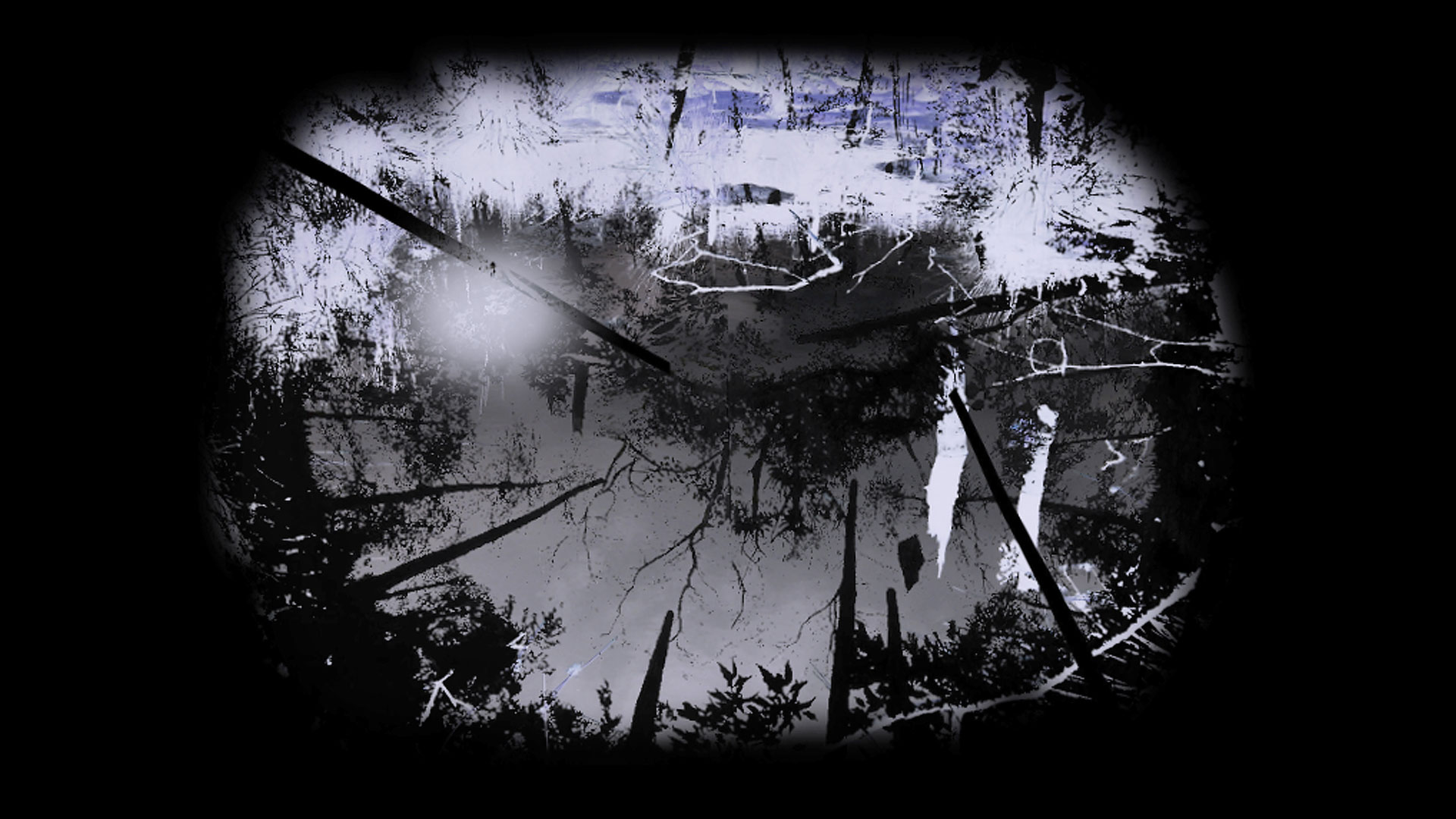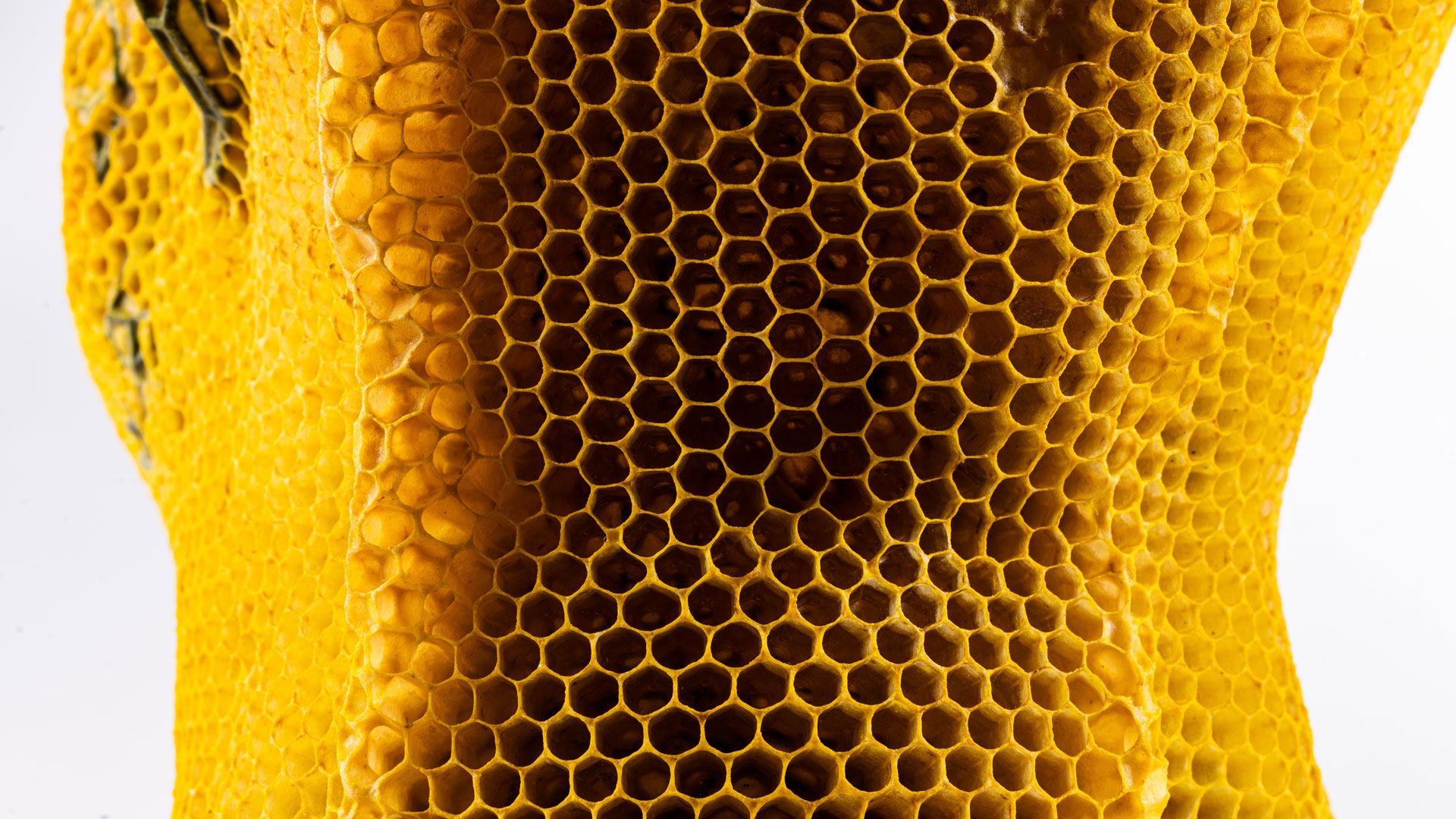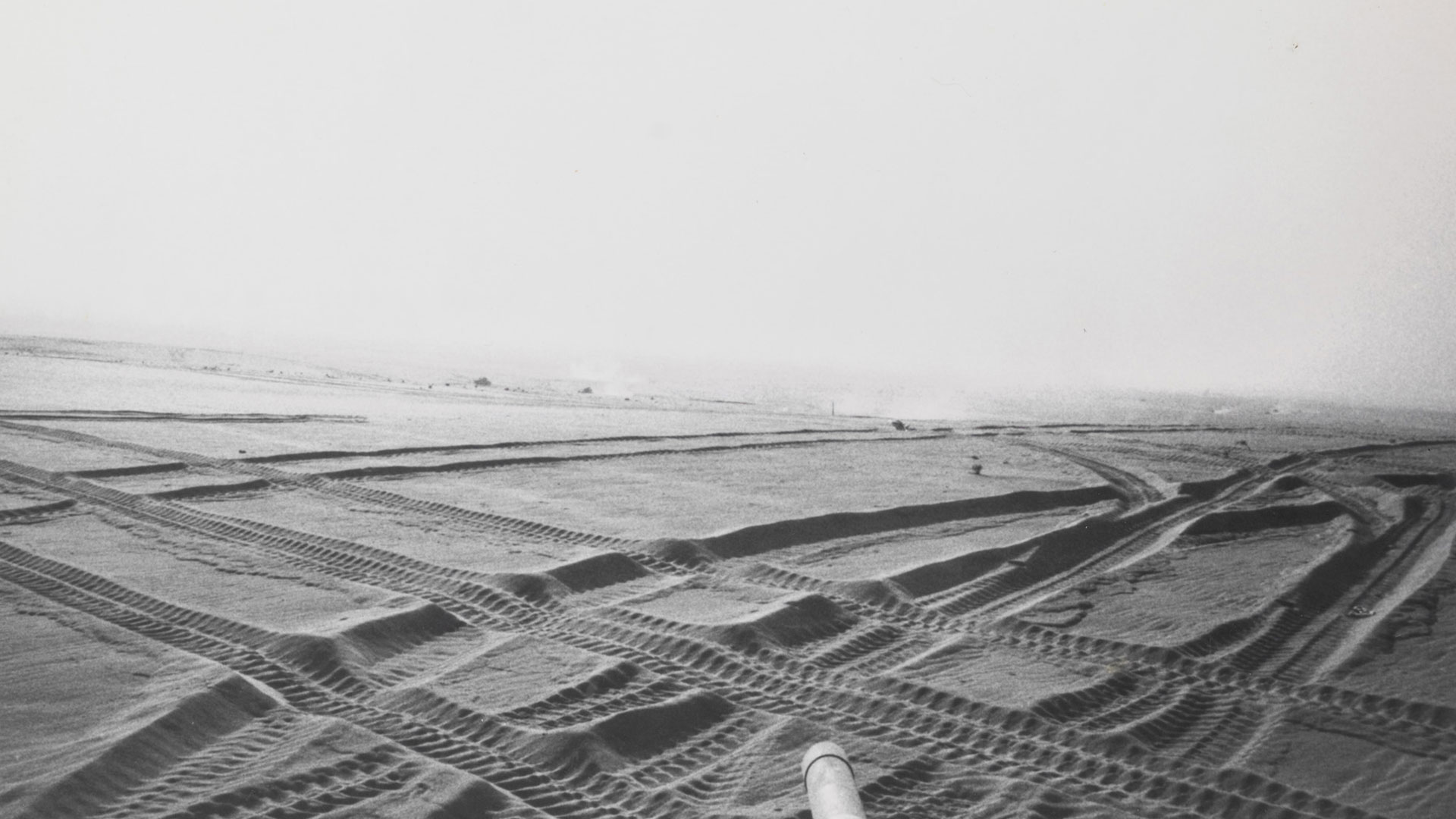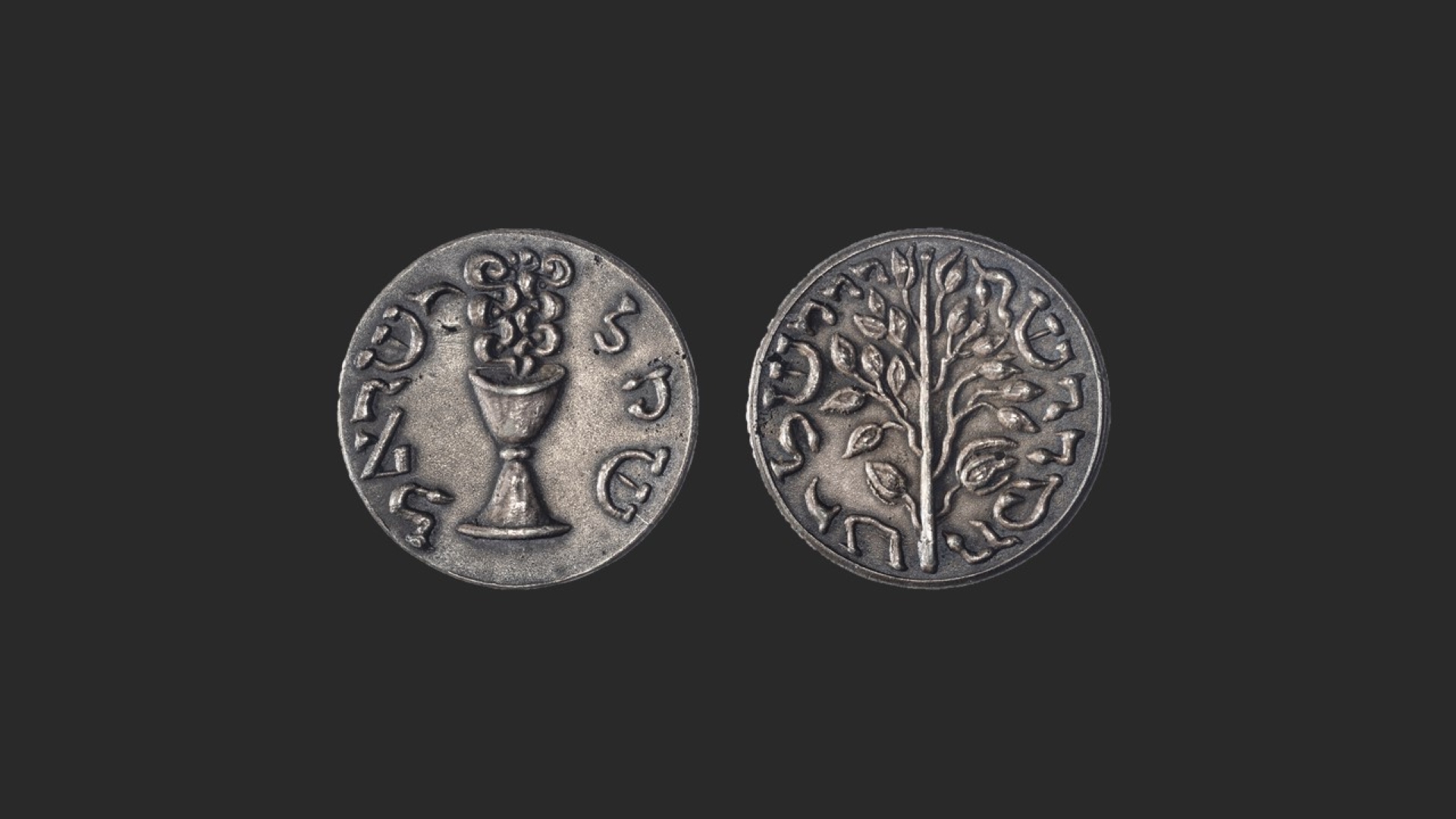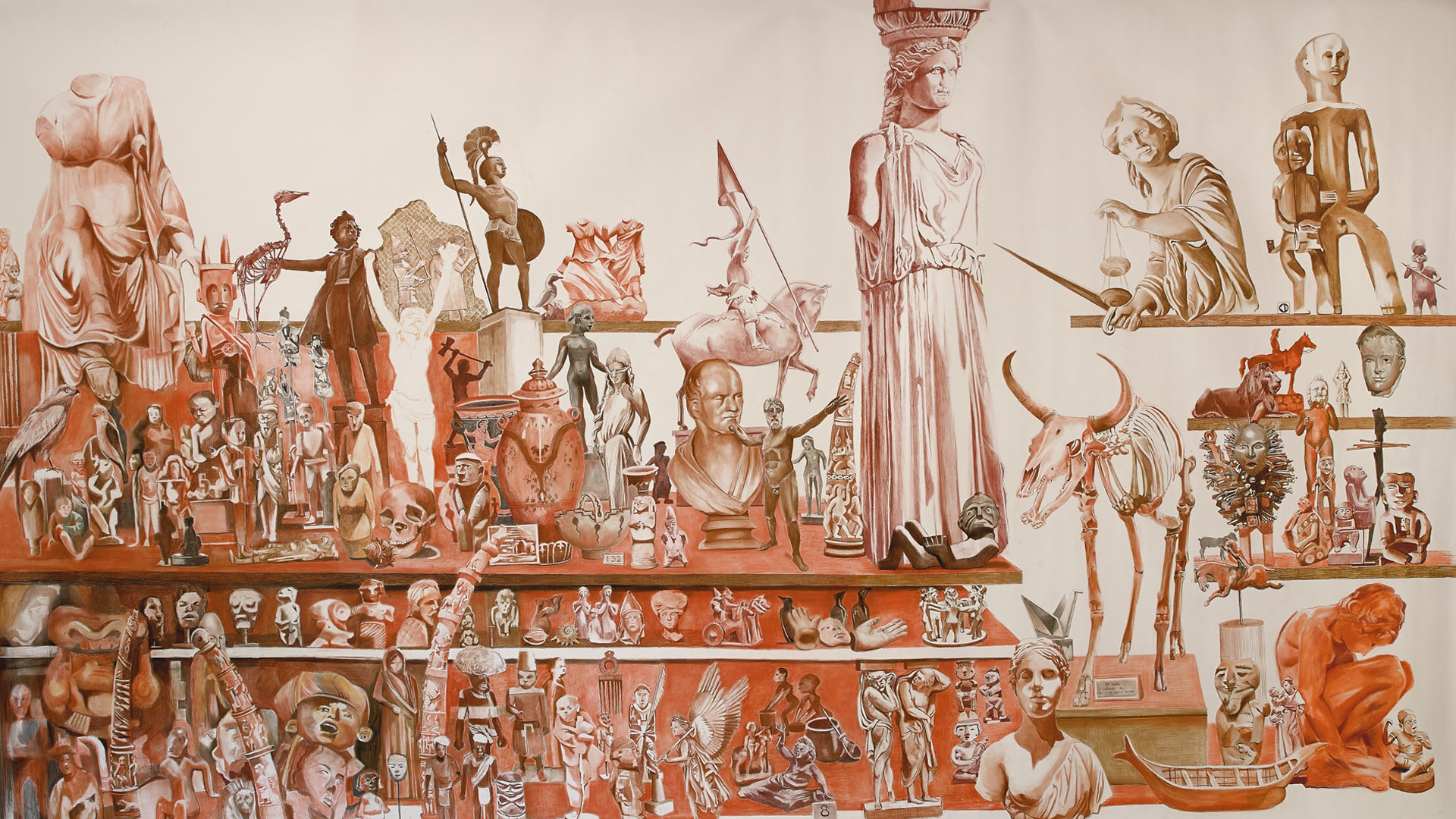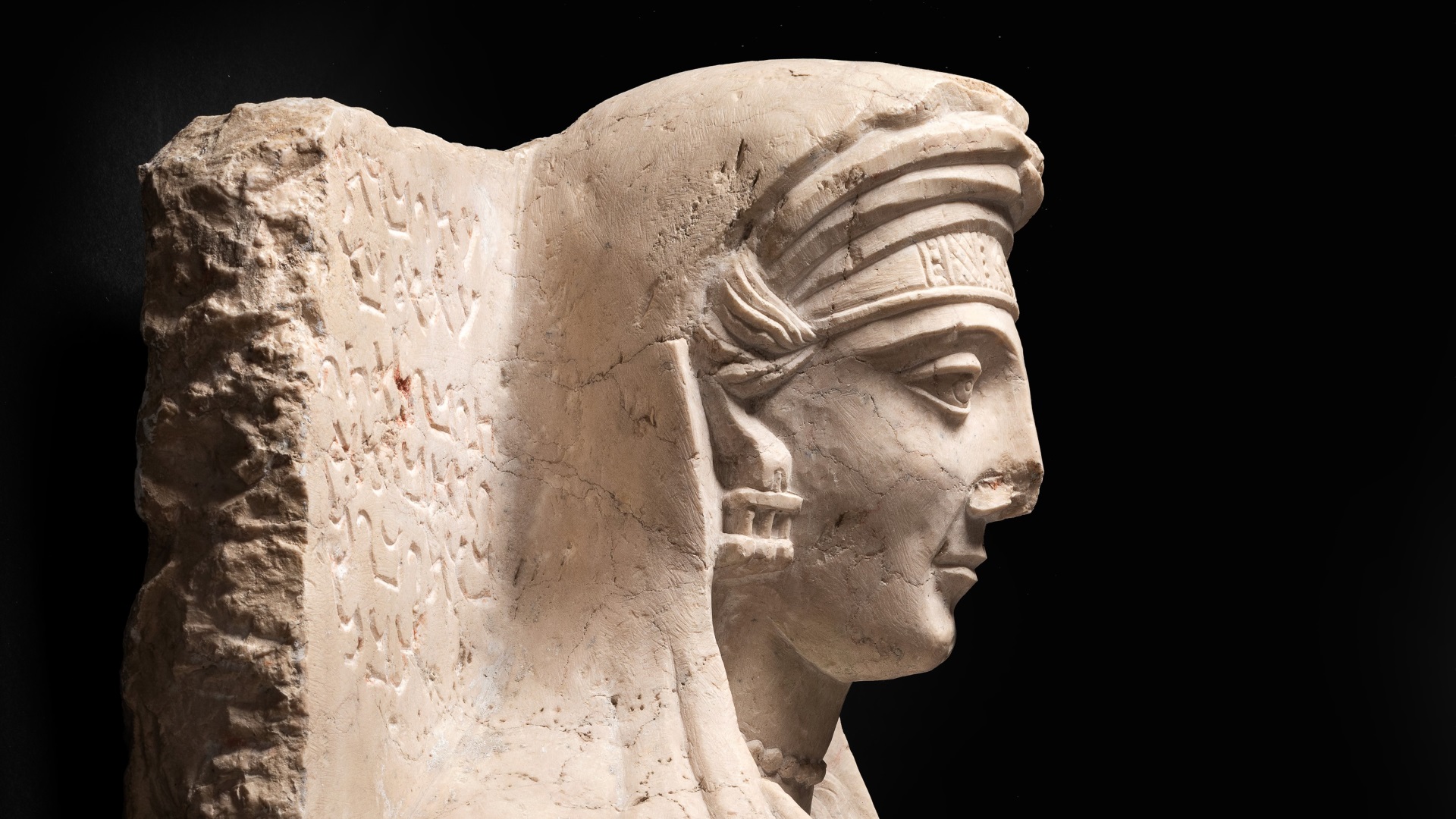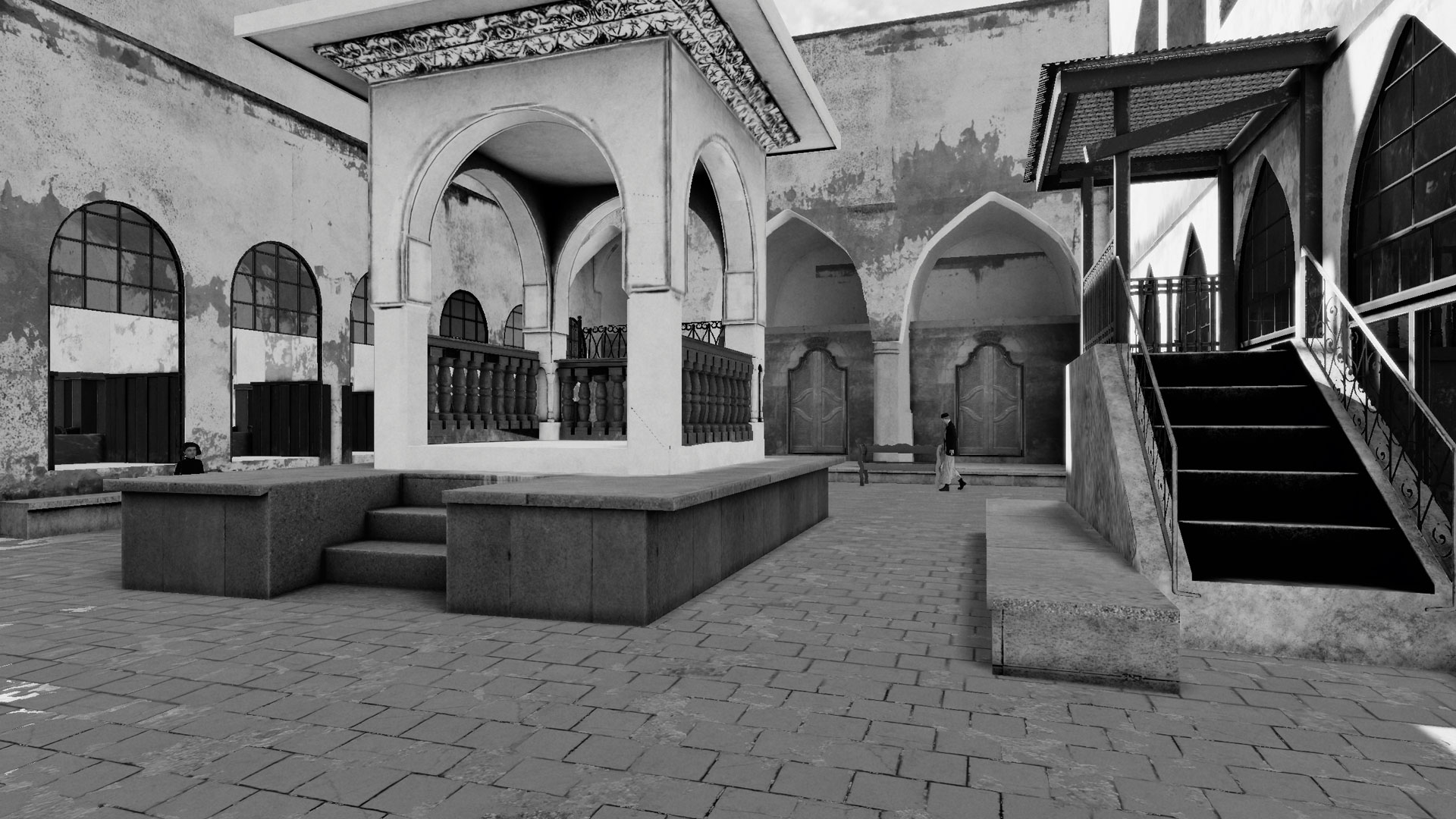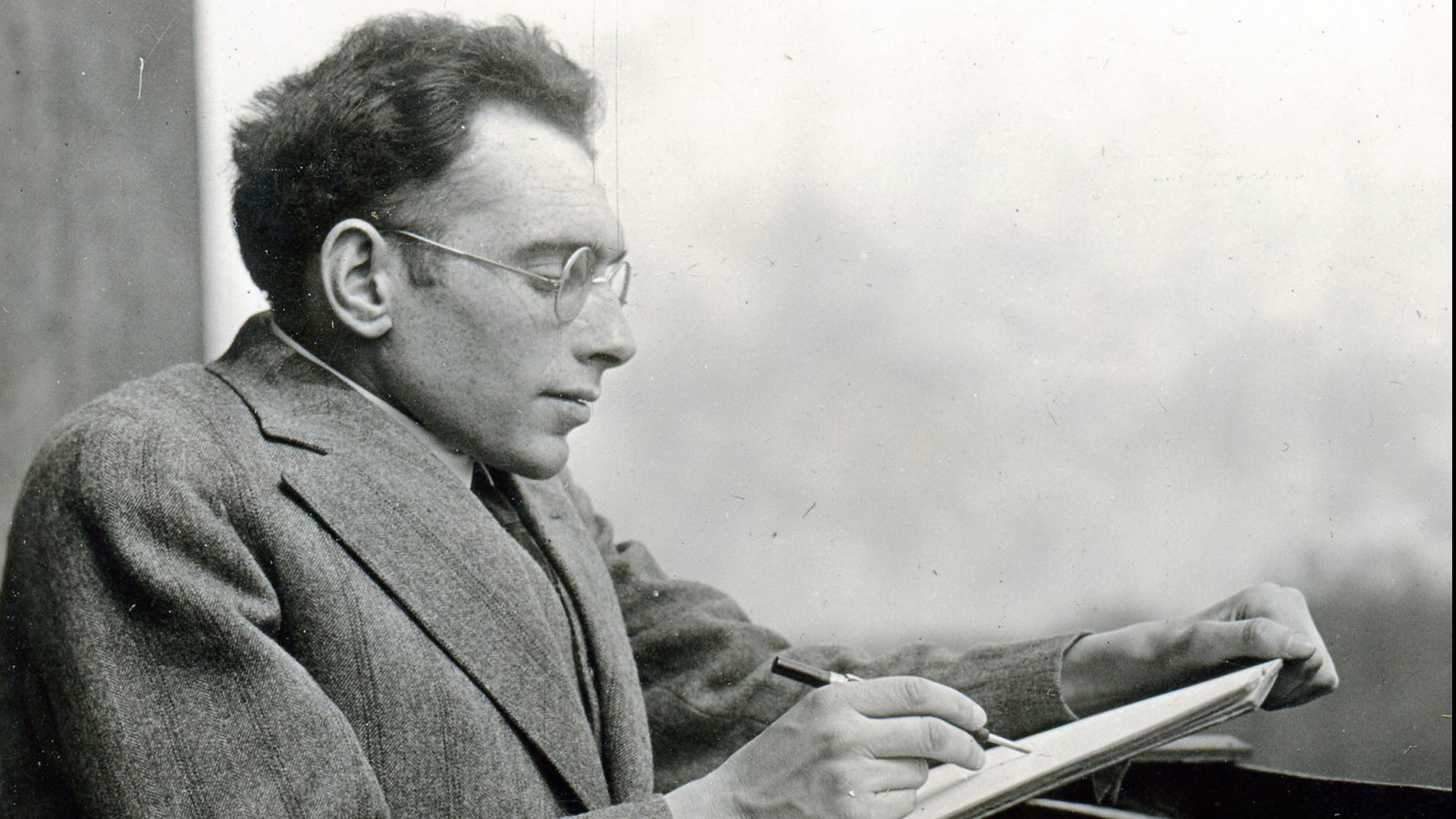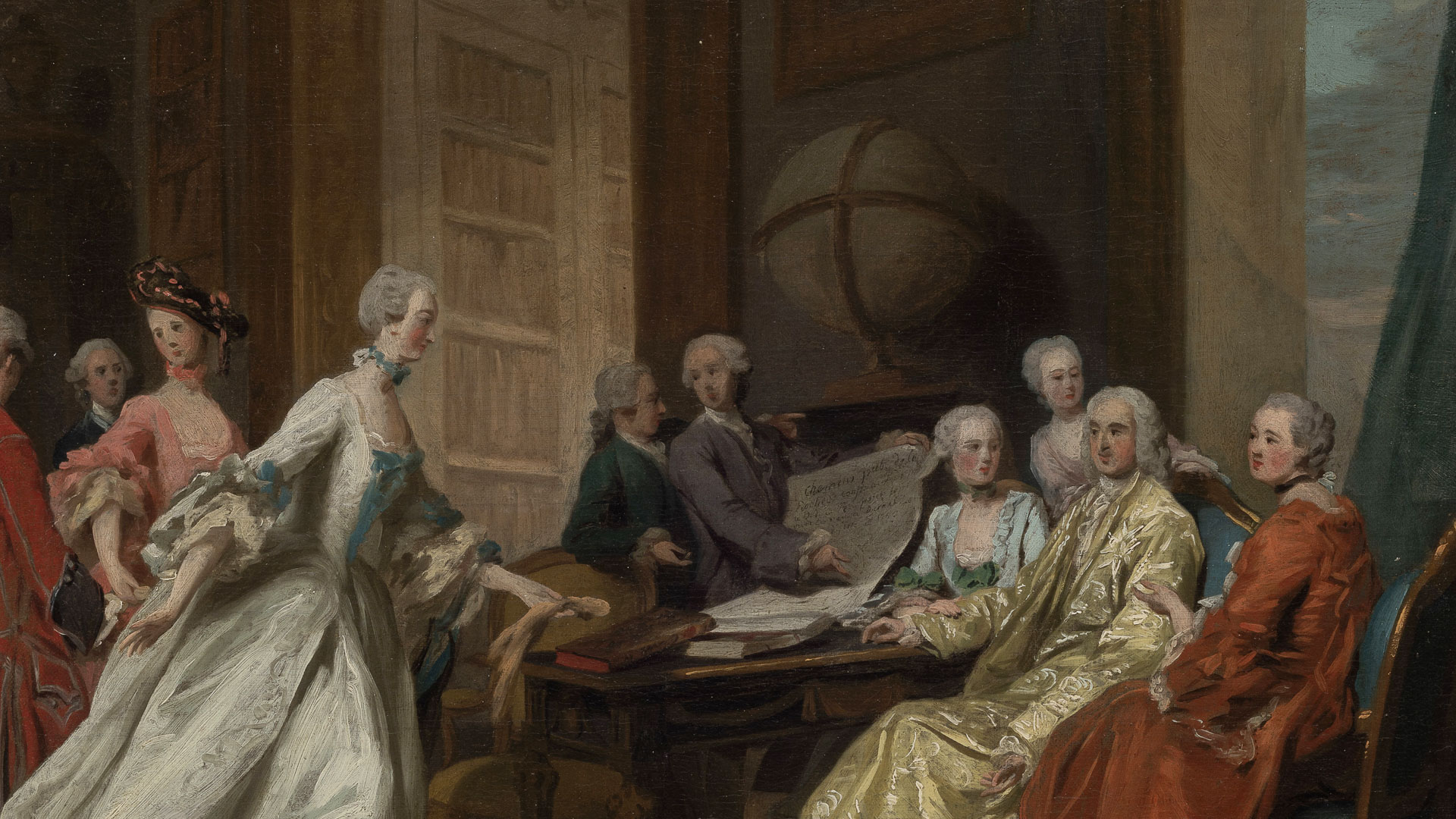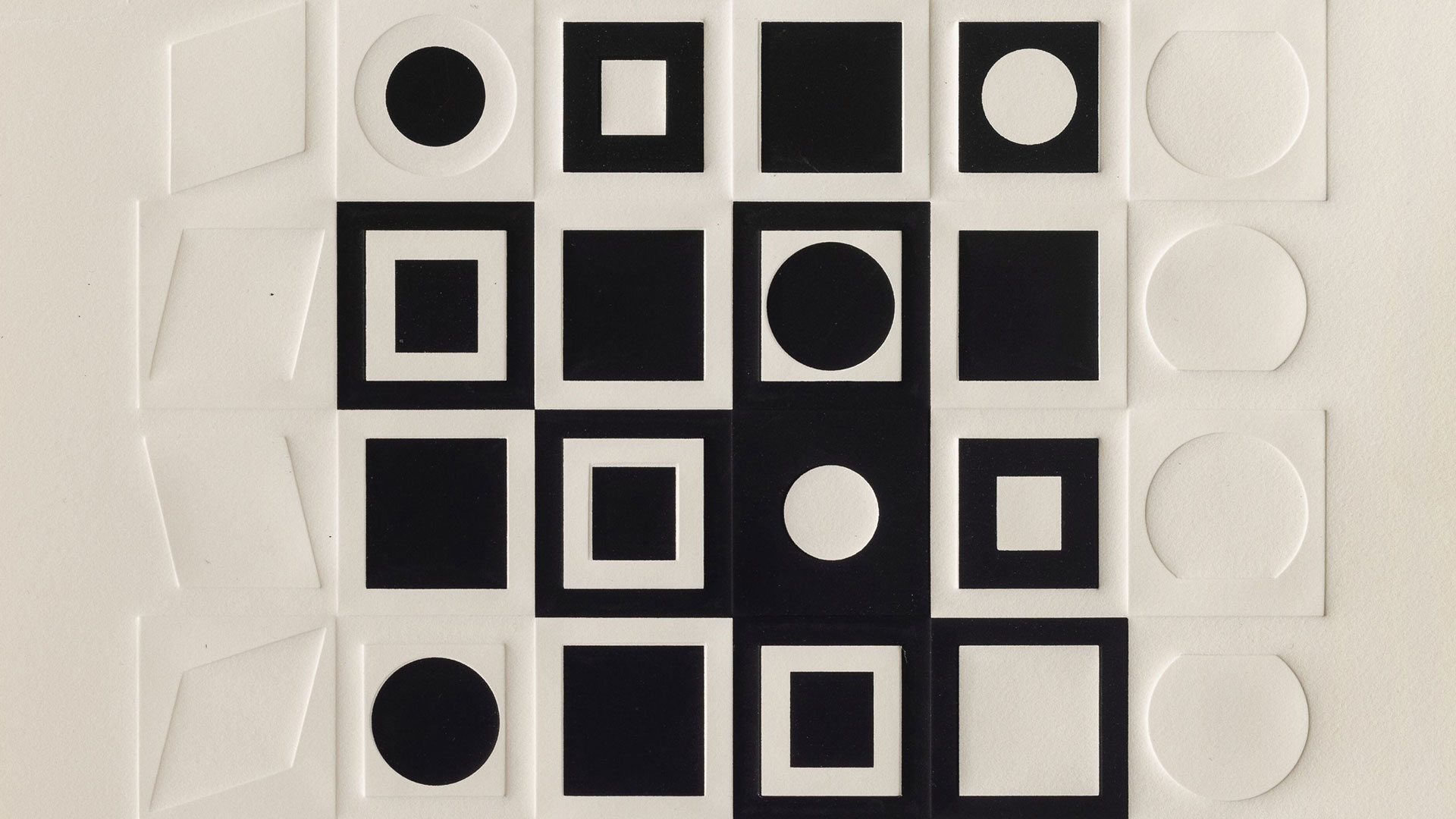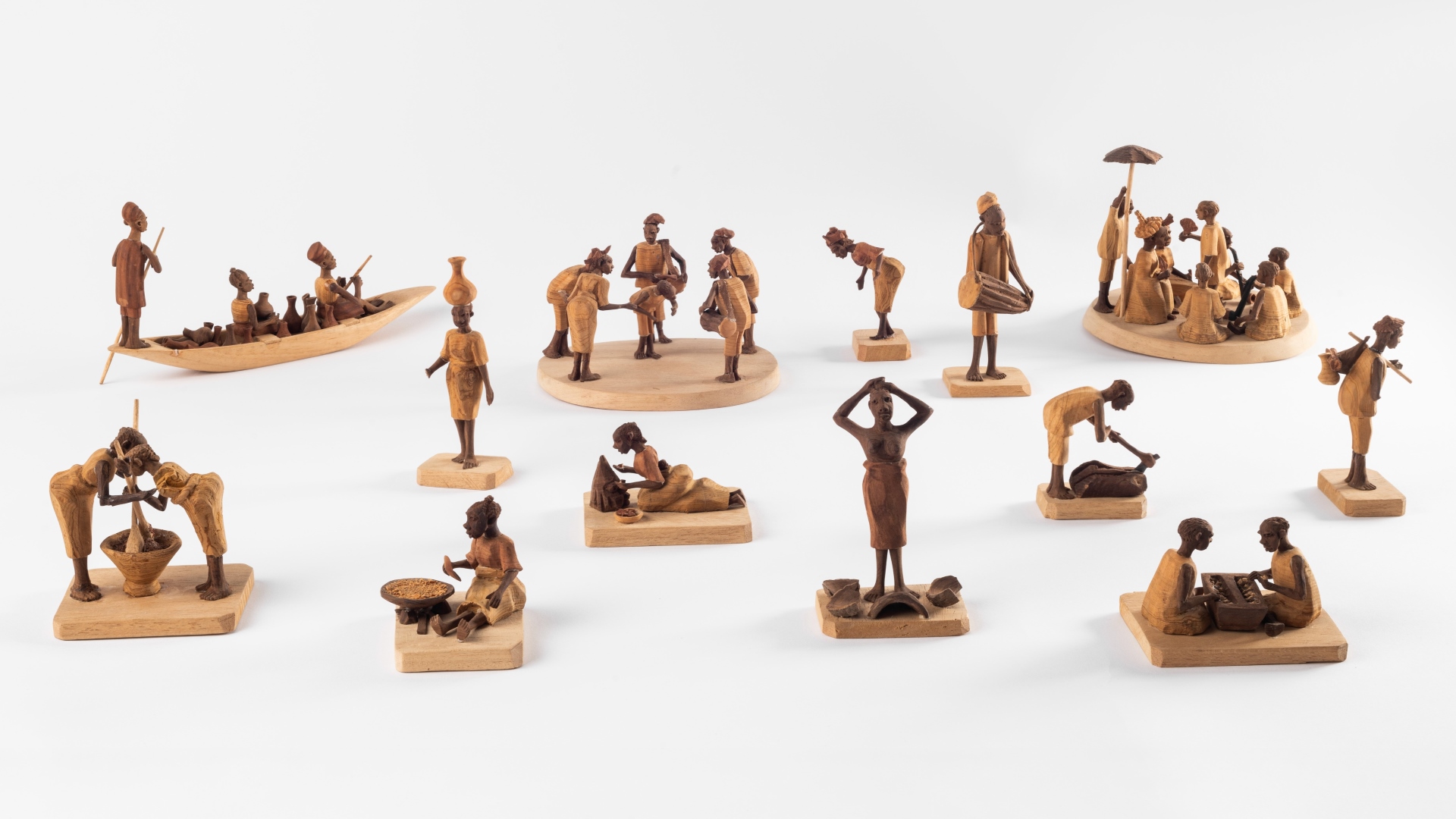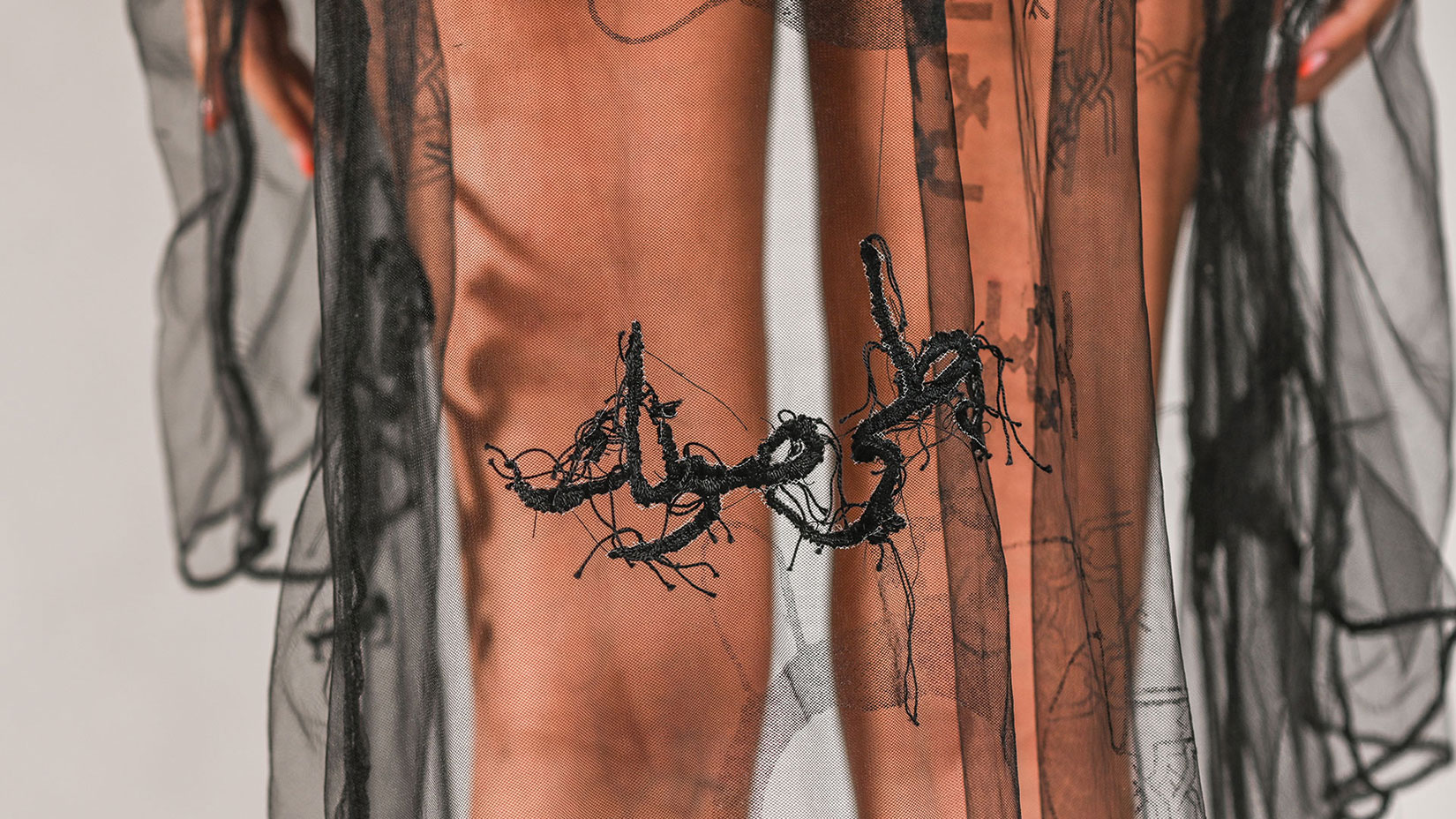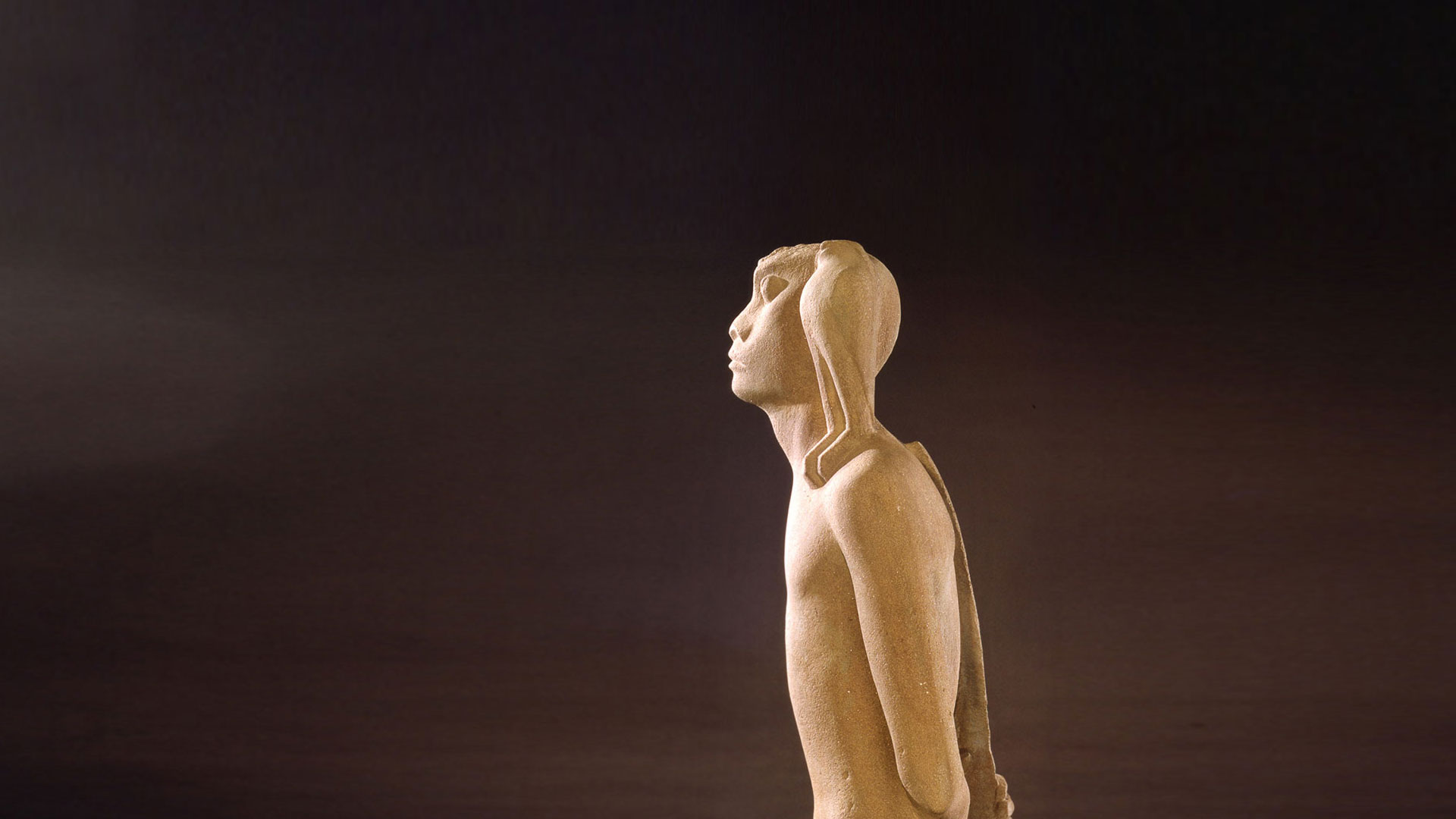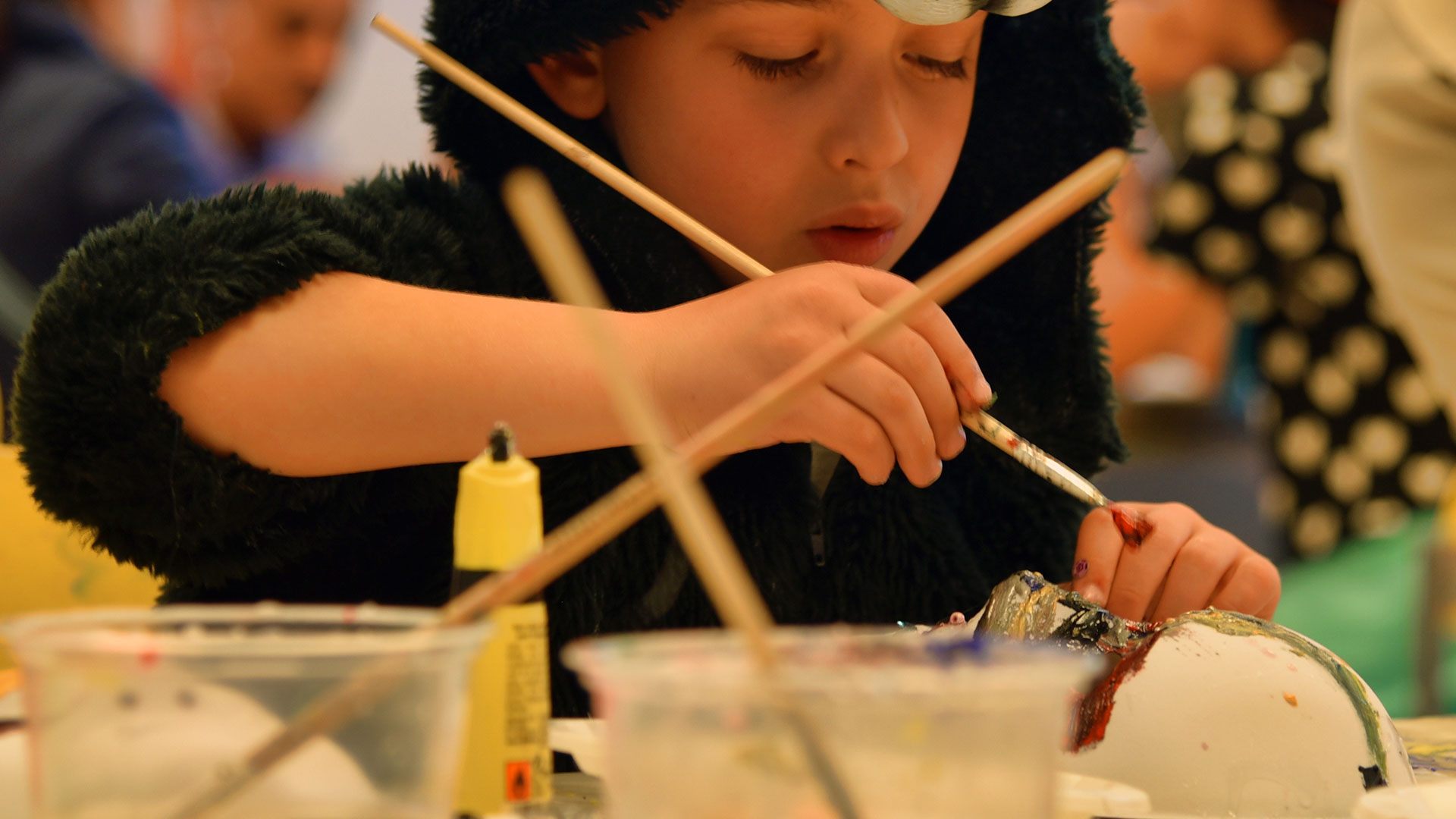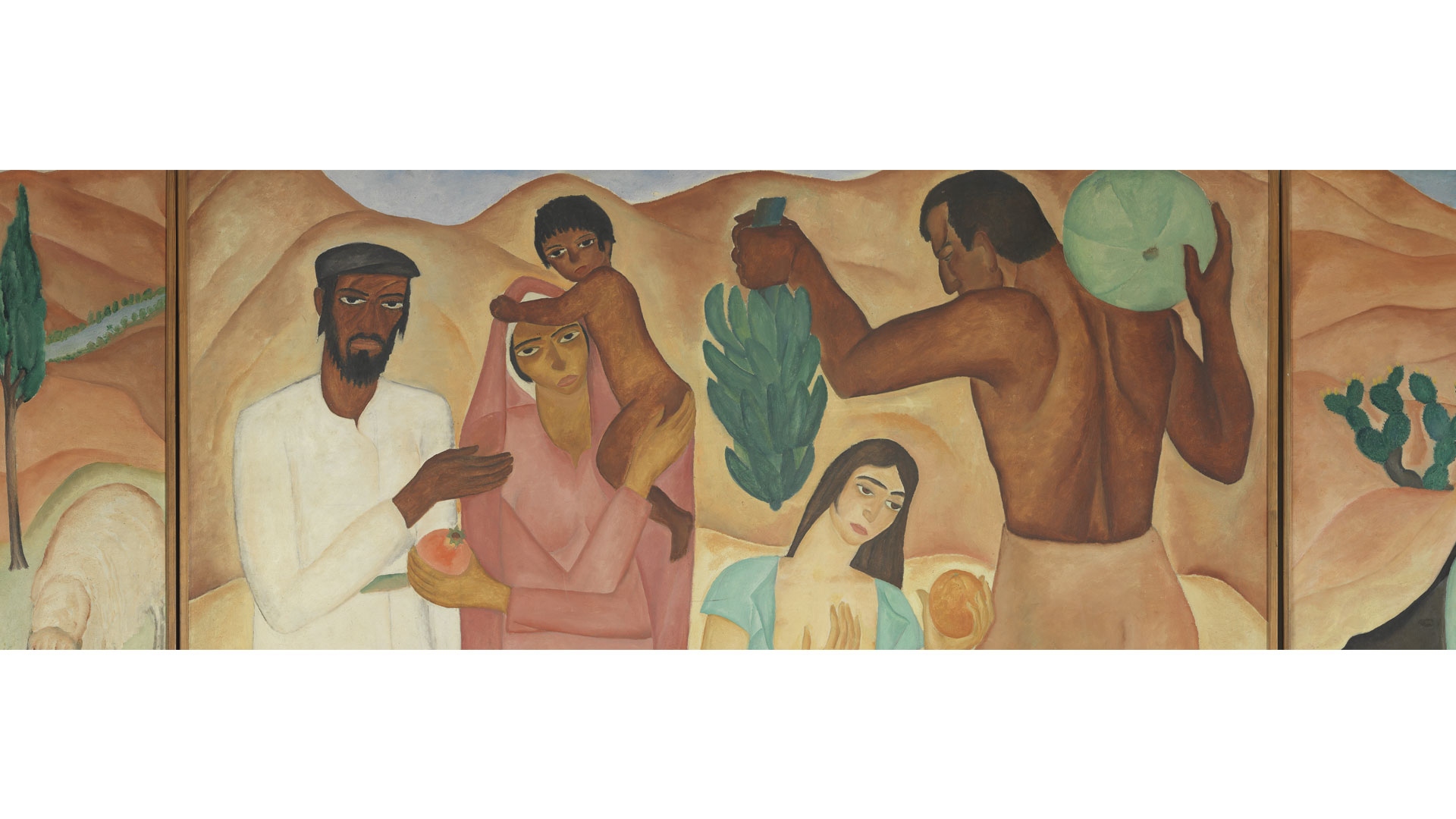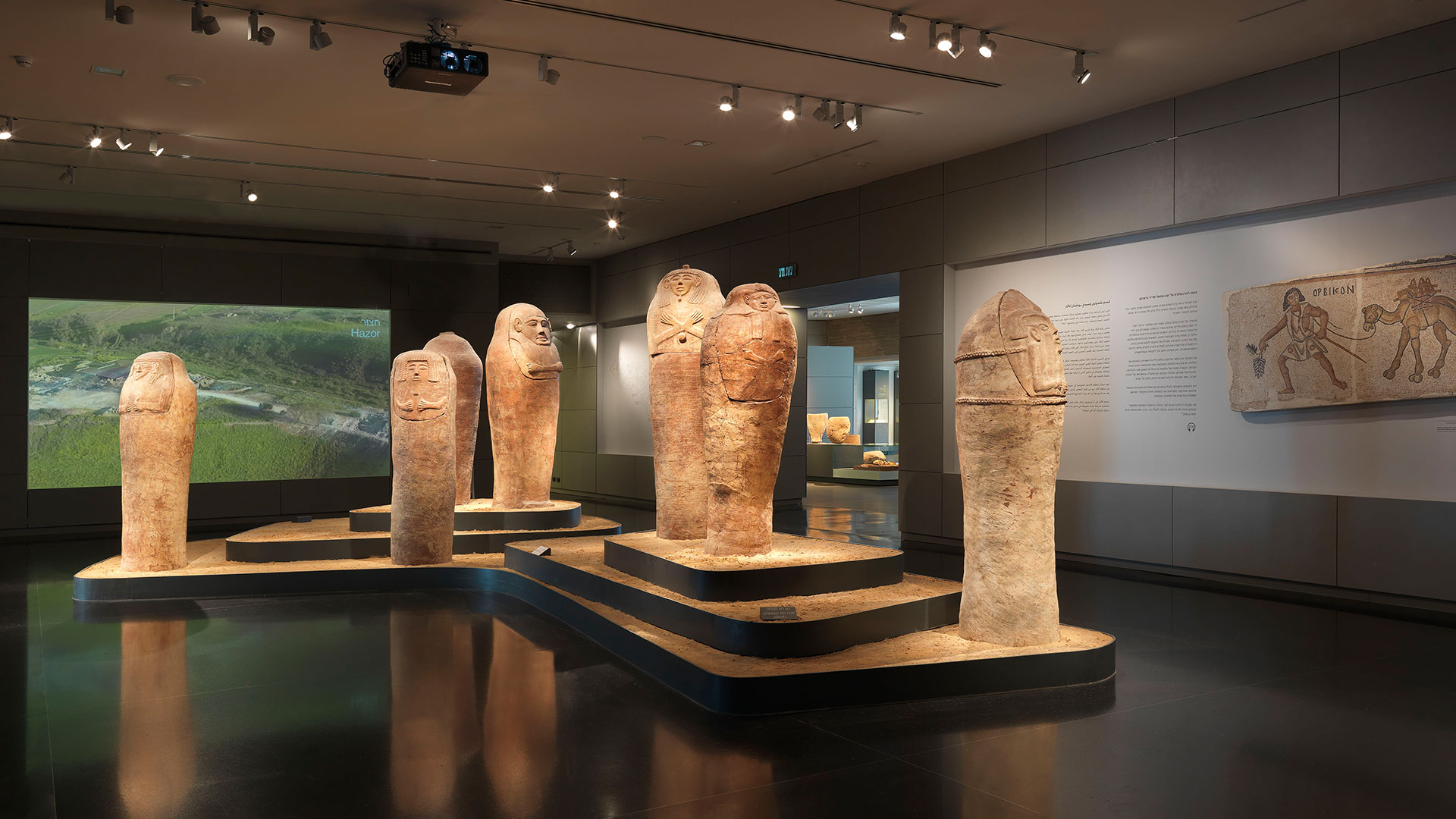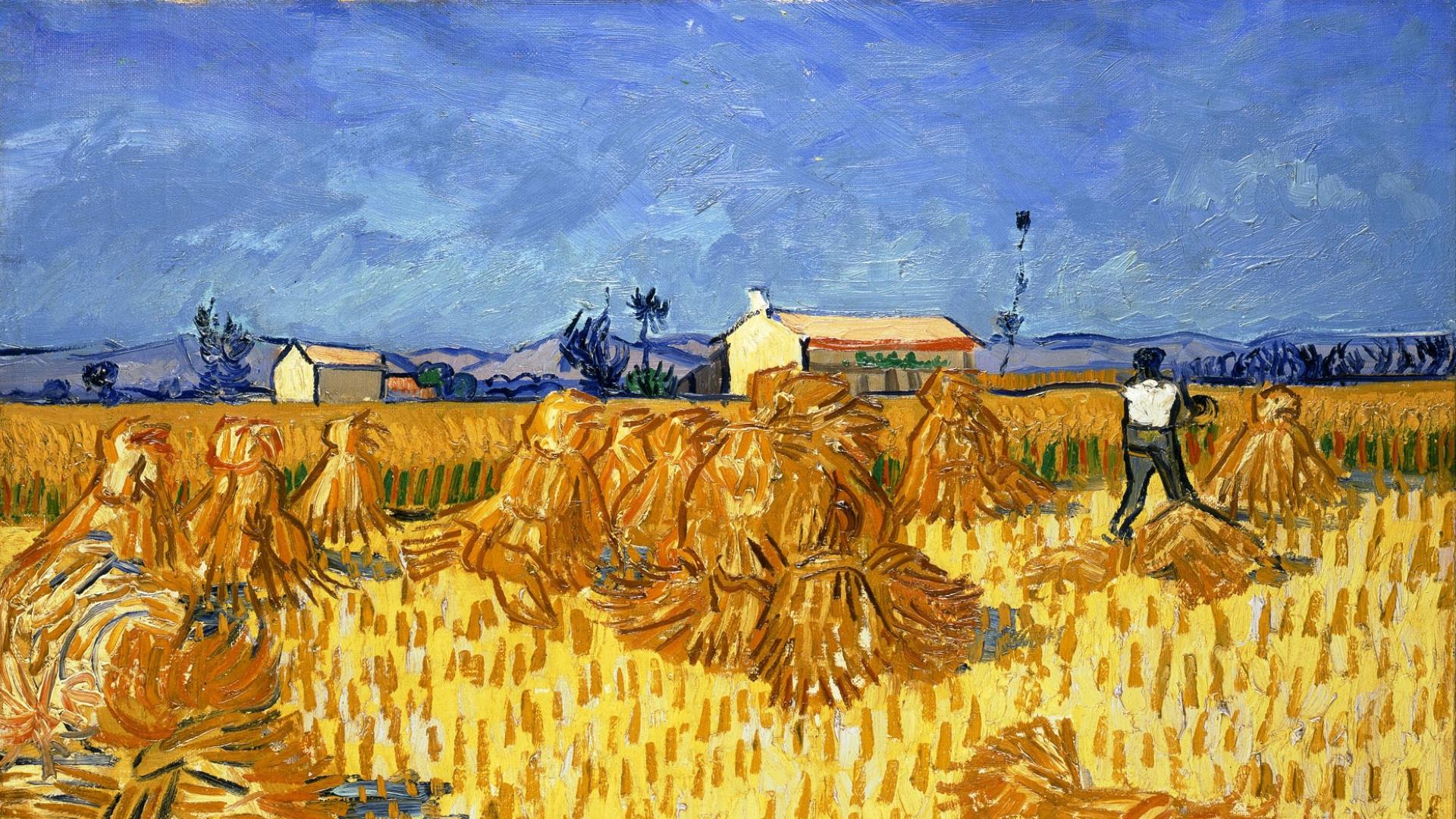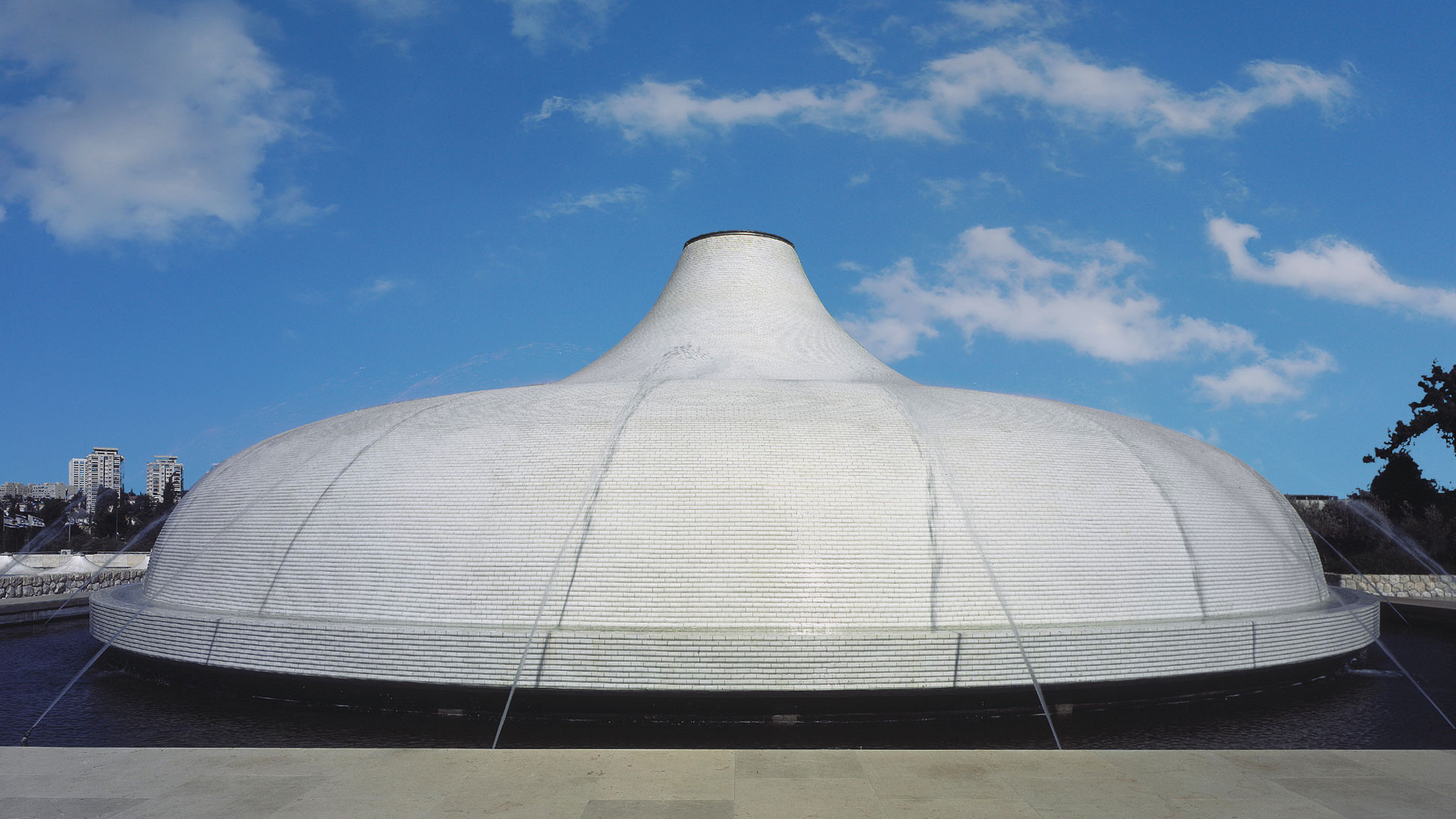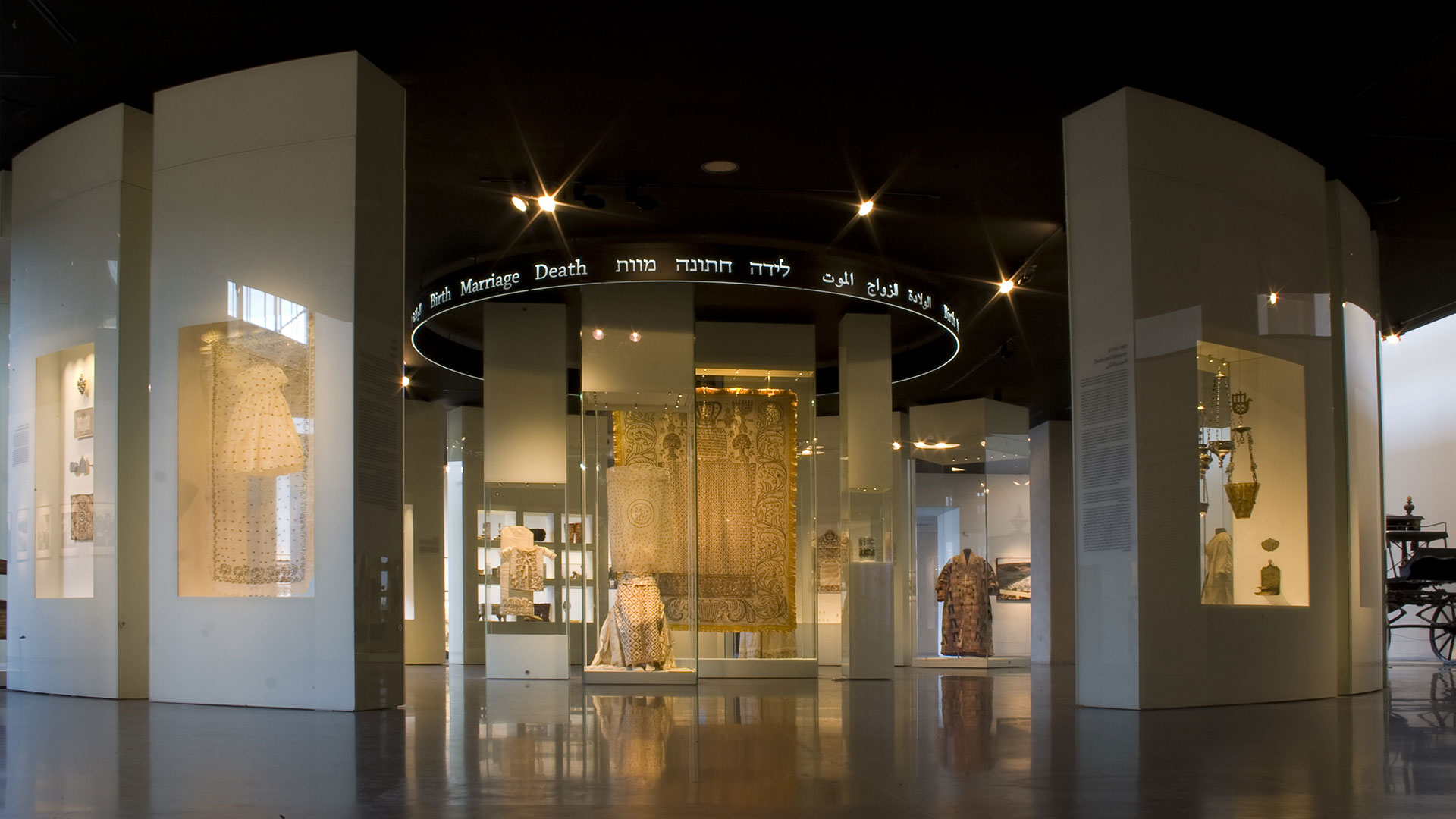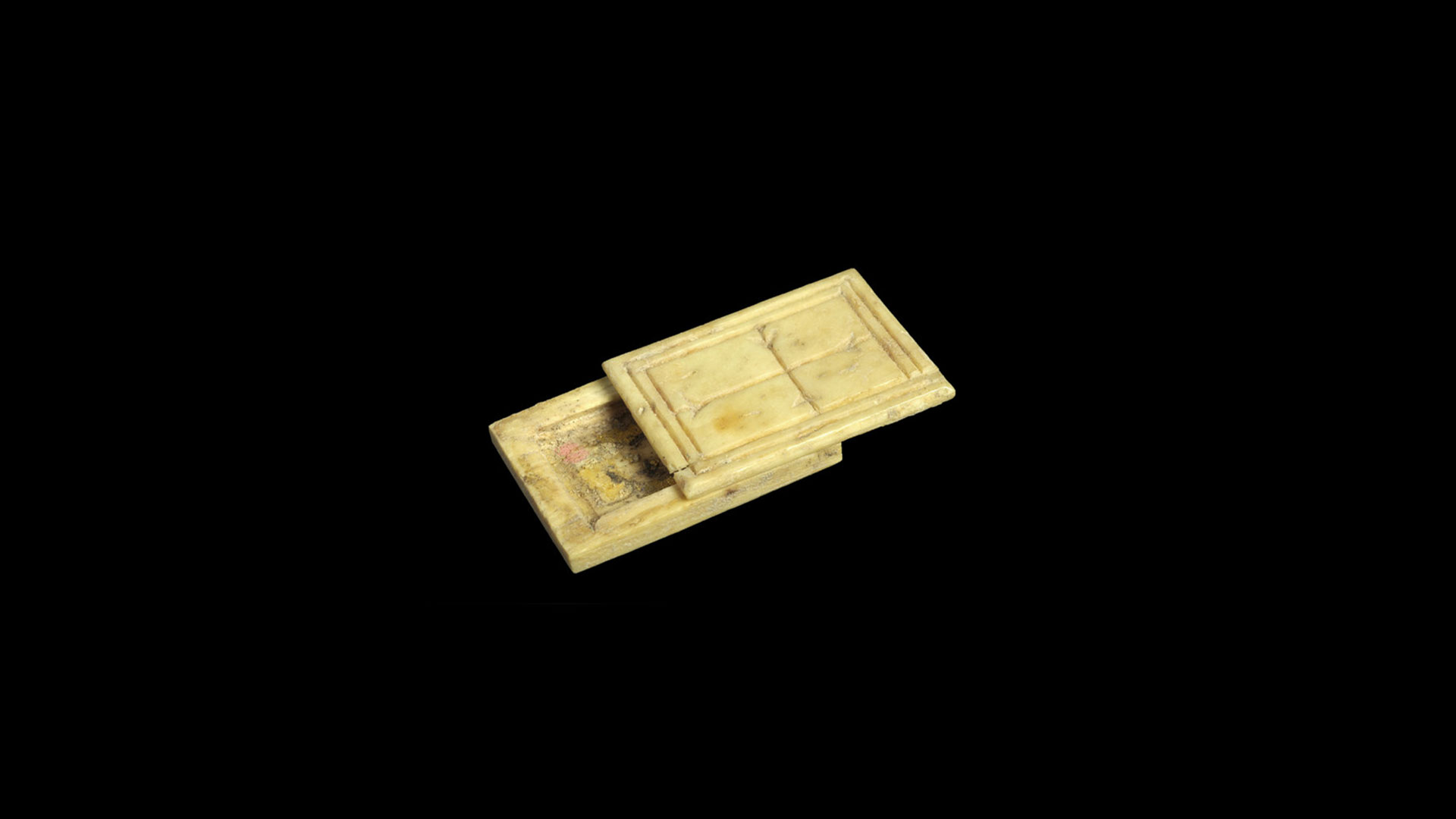
Special Display: Sacred Images
-
May 1 2023
Curator: Morag Wilhelm
Designers: Michal Aldor and Oz Biri
-
Holy Land Gallery, Archaeology Wing
On the road leading up from Jerusalem’s Pool of Siloam to the city’s other pilgrimage centers, excavators discovered a tiny bone box decorated with a cross on the outside and two painted icons on the inside. Despite the box’s deteriorated state, it is possible to make out the figure of a bearded man dressed in white on the inside of the base of the box, while the inside of the cover depicts a woman dressed in blue. The images are probably icons of Jesus and Mary that were used for prayer.
Icons were considered to be divine images made without human involvement. Fervent arguments revolved around the question of whether sanctity should be attached to such earthly goods, and as such, during certain periods the use of icons was forbidden. Many were destroyed, while others were hidden in remote monasteries. This 7th-century icon box provides rare evidence of the use of icons in early Christianity.
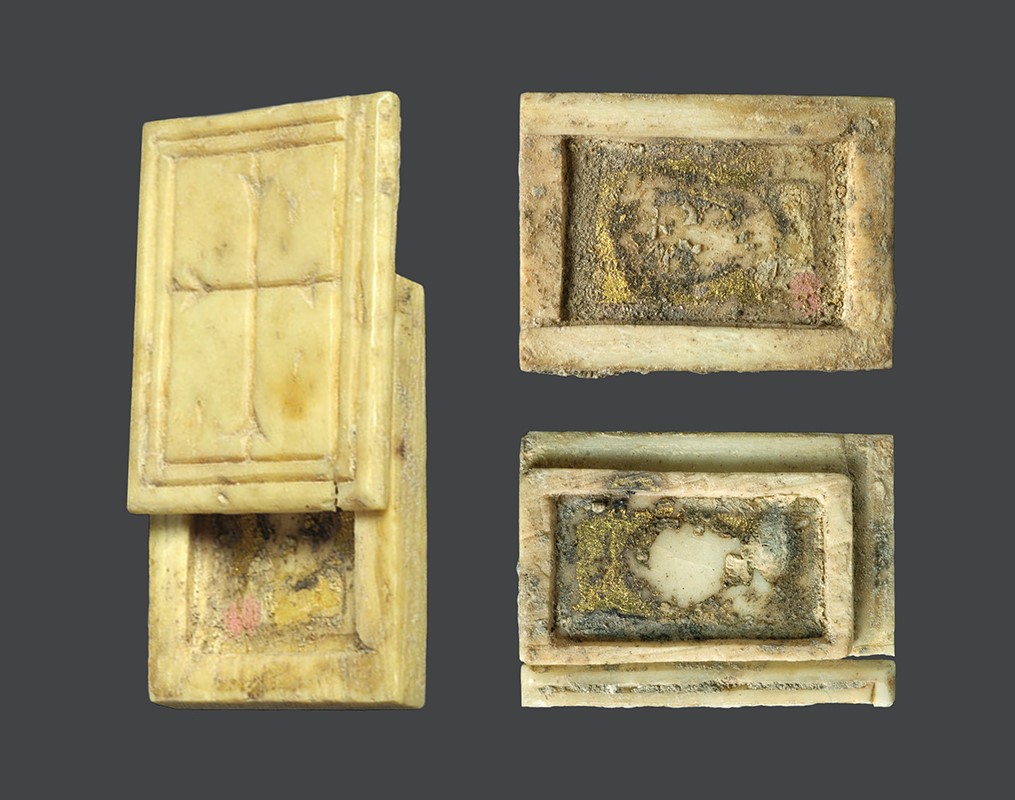
Icon box
Byzantine Period, 7th century CE, Jerusalem
Bone, tempera, and gold leaf
AA 2021–925/1–2
Photo © IAA by Clara Amit
- Apr 19Apr 20Apr 27May 03May 04May 07May 10May 11May 17May 18May 21May 24May 25May 28May 31
- Apr 01Apr 08Apr 15Apr 29
- Apr 02Apr 02Apr 02Apr 09Apr 09Apr 09Apr 16Apr 16Apr 16Apr 30Apr 30Apr 30
- Apr 02Apr 09Apr 16Apr 30
- Apr 16Apr 18Apr 30May 02May 09May 16May 23May 30
- Apr 18May 02May 06May 09May 16May 20May 23May 27May 30
- Apr 18May 02May 09May 16May 23May 30
- Apr 18May 02May 09May 16May 23May 30
- Apr 18May 02May 09May 16May 23May 30
- May 02May 06May 09May 16May 20May 23May 27May 30
- May 06May 20May 27
- May 07Jun 25


